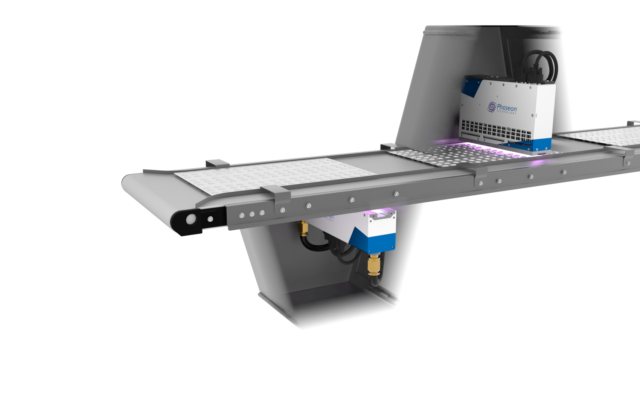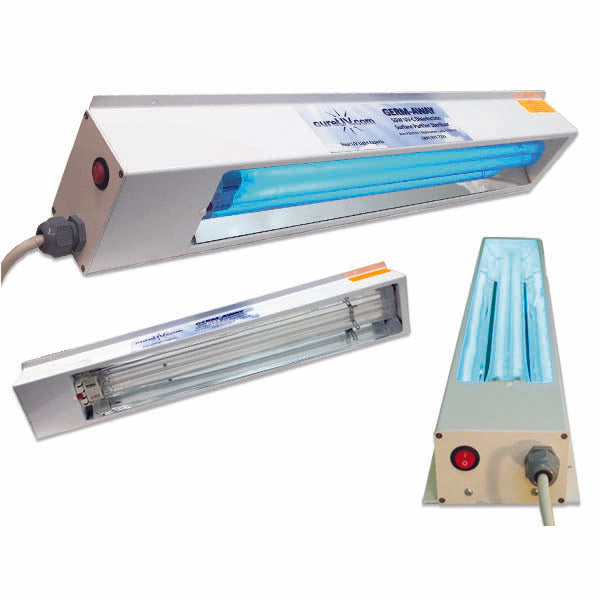UV Surface Disinfection Made Simple: Carrying Out Ideal Practices for Ideal Outcomes
UV Surface Disinfection Made Simple: Carrying Out Ideal Practices for Ideal Outcomes
Blog Article
Discovering UV Disinfection: A Crucial Tool in the Battle Versus Hazardous Pathogens
As the world encounters an ever-increasing hazard from harmful pathogens, the search for reliable techniques of sanitation has come to be an urgent concern. One such strategy that has garnered significant interest is UV sanitation. In this conversation, we will dive right into the globe of UV disinfection, discovering its prospective as a necessary device in the fight versus unsafe virus.
Exactly How Does UV Disinfection Job?
UV sanitation works by utilizing ultraviolet (UV) light to get rid of damaging virus and prevent their spread. This extremely efficient technique entails the use of UV radiation to interrupt the DNA and RNA of microorganisms, making them unable to duplicate and creating their ultimate destruction.
When UV light is used for sanitation, it is commonly given off from a lamp or bulb that creates a specific wavelength of UV-C light. uv surface disinfection. This wavelength, varying from 200 to 280 nanometers, is particularly reliable at penetrating the outer cell wall surface of germs, viruses, and other bacteria. When inside the cell, the UV radiation targets and damages the genetic material, stopping the microbe from duplicating and triggering infection
UV disinfection systems are created to discharge the proper intensity and period of UV light to make sure effective pathogen removal. The dose of UV light needed for sanitation depends upon factors such as the sort of microbe, its resistance to UV radiation, and the specific application. In addition, the system has to be very carefully crafted to ensure proper direct exposure of the target microorganisms and to prevent any possible damage to humans or the setting.
The Advantages of UV Sanitation
UV disinfection supplies a multitude of benefits in properly getting rid of damaging microorganisms and decreasing the danger of infection. Among the main benefits of UV sanitation is its capability to provide a eco pleasant and chemical-free solution. Unlike standard sanitation methods that depend on chemicals, UV disinfection makes use of ultraviolet light to ruin the DNA and RNA of bacteria, providing them not able to recreate and cause infections. This chemical-free strategy makes sure that no hazardous residues are left behind, getting rid of any possible health and wellness threats related to chemical anti-bacterials.
One more significant advantage of UV disinfection is its effectiveness in eliminating a vast array of pathogens. UV light has actually been verified to properly get rid of germs, viruses, fungis, and protozoa, consisting of those that are immune to conventional disinfectants. This broad-spectrum performance makes UV disinfection a versatile tool in different setups, such as healthcare facilities, water therapy plants, and food processing sectors.
Along with its efficacy, UV sanitation additionally provides quick sanitation cycles. Unlike other methods that need extensive get in touch with times or repeated applications, UV disinfection can achieve significant microorganism decrease in an issue of seconds. This effective and fast process permits improved efficiency, lowered downtime, and enhanced total operational performance.
In addition, UV disinfection is a non-contact method, which suggests that it does not need direct physical contact with the surfaces or objects being disinfected. This function makes it ideal for usage on fragile tools and delicate products that might be damaged or influenced by other sanitation methods.
Applications of UV Disinfection in Health Care

UV sanitation is additionally made use of in the sanitation of look at these guys medical tools and instruments (uv surface disinfection). The high intensity of UV light can efficiently eliminate microorganisms, infections, and various other bacteria, ensuring that clinical devices are free and secure from impurities. Furthermore, UV disinfection is used in water treatment systems within medical care facilities. UV light can suspending damaging microorganisms, infections, and parasites, making the water safe for consumption and lowering the risk of waterborne infections.
Furthermore, UV sanitation innovation is used in the sanitation of health care uniforms and individual safety equipment (PPE) By utilizing UV light, health care experts can guarantee that their attires and PPE are devoid of pathogens, preventing the transmission of infections in between people and medical care workers.
UV Disinfection in Public Spaces
Public areas are progressively executing UV disinfection modern technology as an important step to fight the spread of damaging virus. With the continuous international pandemic and the consistent hazard of infectious illness, the need for efficient sanitation approaches in public areas has actually ended up being extremely important. UV sanitation provides a reliable and reputable remedy in this regard.

UV disinfection systems use ultraviolet light to shut down the DNA and RNA of germs, viruses, and other pathogens. This procedure interrupts their capability to replicate and make them harmless. These systems can be set up in numerous public rooms, including heating and cooling systems, escalators, lifts, and surface disinfection robots. Making use of UV disinfection technology in public areas not just assists in minimizing the risk of infection however likewise instills confidence among the general public regarding their safety.
As public areas proceed to adapt to the obstacles posed by contagious illness, UV disinfection modern technology plays a vital role in making sure a clean and risk-free setting. By carrying out such procedures, public rooms can efficiently minimize visit this site right here the spread of harmful pathogens and add to the total wellness of the neighborhood.
The Future of UV Disinfection Innovation
As the need for boosted disinfection methods remains to expand in reaction to the continuous international pandemic and the constant threat of contagious diseases, the future of UV sanitation innovation holds appealing advancements in making certain a lot more effective and efficient virus eradication in different settings.

One location of improvement is the development of even more portable and compact UV sanitation devices. These tools would permit simpler and extra flexible implementation in a range of settings, such as offices, institutions, and transportation systems. Furthermore, improvements in automation and robotics are being checked out to boost the performance and efficiency of UV disinfection procedures. This consists of making use of autonomous robotics furnished with UV-C lights to browse and decontaminate huge locations swiftly and precisely.
One more area of expedition is making use of UV sanitation in air filtration systems. By integrating UV-C lights into HVAC systems, airborne virus can be efficiently neutralized, lowering the risk of transmission in interior environments.
Furthermore, scientists are exploring making use of UV sanitation in food handling facilities to ensure the safety and security and top quality of food. UV-C light has actually been located to be effective in getting rid of foodborne microorganisms, offering a chemical-free choice to traditional disinfection approaches.
Final Thought
Finally, UV sanitation is a vital tool in the battle against harmful virus. Its effectiveness in eliminating microorganisms, viruses, and various other bacteria makes it a beneficial technology in medical care setups and public spaces. With its capability to give a eco friendly and chemical-free technique of sanitation, UV modern technology holds wonderful possible for the future. Its widespread implementation can contribute to the prevention of infections and the improvement of public wellness.
UV disinfection systems are made to emit the appropriate strength and duration of UV light to make sure reliable virus removal. The dosage of UV light required for disinfection depends on variables such as the kind of bacterium, its resistance to UV radiation, and the specific application. Unlike standard sanitation methods that rely on chemicals, UV disinfection uses ultraviolet light to destroy the DNA and RNA of bacteria, making them unable to reproduce and create infections.In addition to its effectiveness, UV sanitation likewise offers rapid sanitation cycles. One of the main applications of UV disinfection in health care is in the disinfection of person rooms and operating cinemas.
Report this page